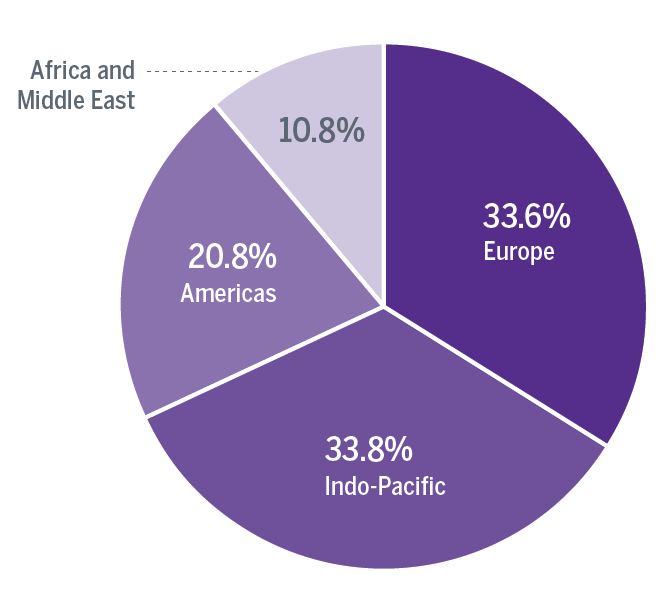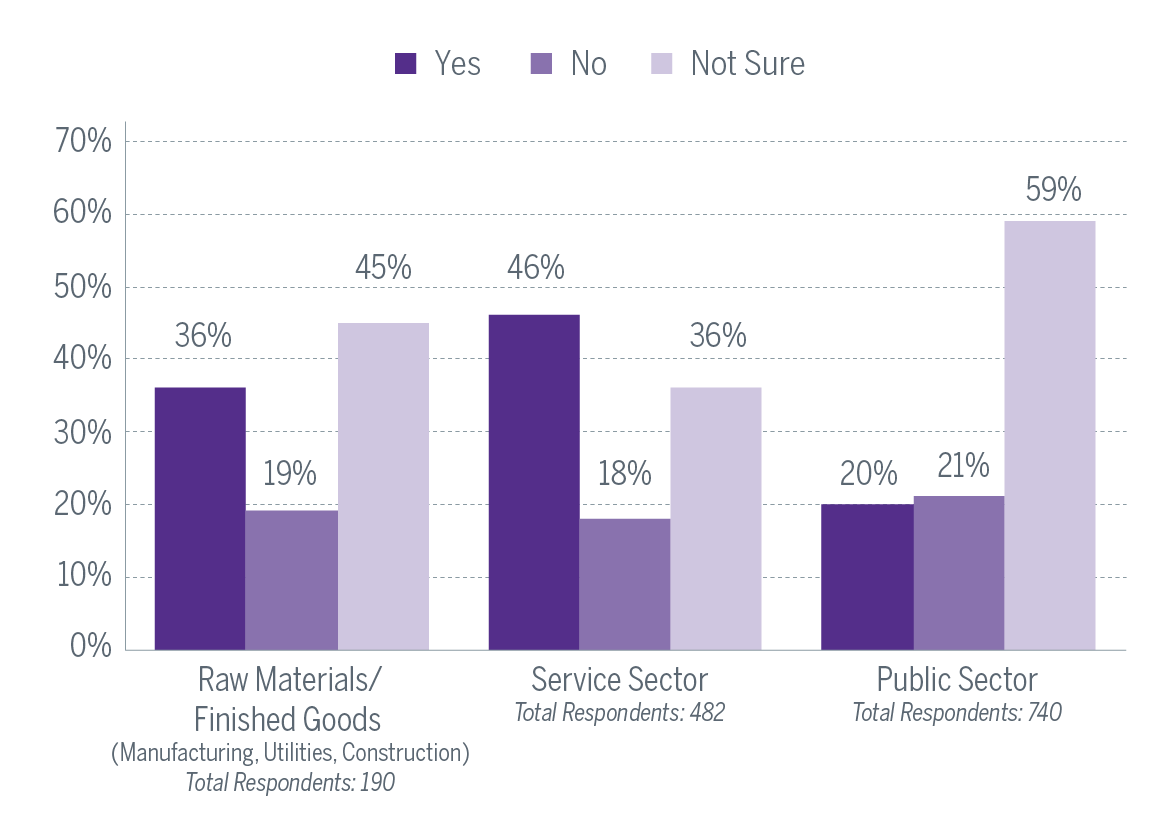The following article is part of an ongoing series of analyses based on the recent Asia Matters for America Public and Elite Opinion poll. See all articles in the series here.
According to Sister Cities International, a sister relationship is a “broad-based, long-term partnership between two communities in two countries.” These relationships can be at the city, county, or state level and are officially recognized after elected/appointed officials sign an agreement between their two countries. Often volunteer-run and independent of their local governments, sister relationships focus their outreach on issues relevant to their local communities, from trade to educational exchange to cultural programming.
The United States has over 1,000 sister relationships with countries across Asia; 959 sister city relationships and 90 sister state relationships. Apart from Mississippi, every US state and the District of Columbia (which was not included in this survey but has three partnerships) have at least one sister partnership with a country in Asia.
Asia has the largest number of sister city relationships with the United States of any region in the world, making up 33.8% of all relationships and narrowly beating Europe. Japan has the most sister city partnerships of any Indo-Pacific country with 444 partnerships. Rounding out the top six are China (202), South Korea (110), Taiwan (98), the Philippines (67), and Australia (44).
Sister City Relationships with the United States by Region

Countries With Most Sister City Partnerships in the United States

In the recent Asia Matters for America: Public & Elite Opinion survey conducted by NORC at the University of Chicago in partnership with the East-West Center, members of the American public as well as business leaders, elected/appointed officials, and bureaucrats (hereafter referred to as “elites”[1]) were asked a series of questions to determine how they viewed the United States’ interconnectedness with Asia on a variety of fronts, from economics to politics to cultural exchange. In this survey, elites were asked about their knowledge of the existence of a sister partnership their state or locality had with an Asian country, and 31% of respondents surveyed across the United States stated they knew of such partnership.
Percent of Elites Aware of a Sister Partnership Their Locality Has With an Asian Country

Geographically, 46% who answered “Yes” were in US states in the West[2], with 28% of those in the Northeast in a distant second, 26% in the South, and 25% in the Midwest.
Percent of Elites Aware of a Sister Partnership Their Locality Has With an Asian Country
by Geographic Location

States in the West make up over 50% of the total sister partnerships (528 out of 1,049) the United States has with Asian countries. California alone accounts for 23% or 246 individual relationships. Therefore, it stands to reason those surveyed who live in this region would be more aware of sister partnerships given the sheer volume alone. States in the South account for 21% of total sister partnerships (223), followed by the Midwest with 20% (207), and the Northeast with 8% (88). The fact that 28% of the elites based in the Northeast said “Yes,” despite the region having the lowest amount of sister relationships with Asia could be due to increased interactions/knowledge individual elites had about sister partnership organizations themselves.
Sister Partnerships Between the United States and the Indo-Pacific

Despite most of the respondents being employed in the public sector (740), only 20% in that sector stated their state or locality had a sister city. The majority that answered “Yes” were employed in either the service sector (46%) or the raw materials/finished goods (manufacturing, utilities, construction) sector (36%).
Percent of Elites Who Know About a Sister Partnership Their Locality Has With an Asian Country
by Employer Type

Nearly 30% of US goods and services exports go to the Indo-Pacific, amounting to over $735 billion in 2021. Combined services sector exports alone make up roughly a third of all US exports to Asia. Many sister partnerships were started or have been further strengthened by trade delegations between a US city/state and its Asian partner, no doubt making those who work in these sectors more aware of the relationships themselves.
Composition of US Goods and Services Exports to the Indo-Pacific

Of the 31% who had answered “Yes” to their state or locality having a sister partnership, 85% of them rated the partnerships as beneficial, including 66% who found them “very/extremely beneficial".
Percent of Elites who Rate Their Local Sister City Partnership as Beneficial

Most elite respondents who see sister relationships as beneficial were businesspeople. In total, 42% of respondents in the services sector and 34% of respondents in the raw materials/finished goods sector saw these relationships as “extremely beneficial,” compared to only 26% of those in the public sector. In terms of political affiliation, 41% of those who saw the relationships as “extremely beneficial” identified as Democrats, followed by 27% as Republicans and 24% as Independents.
Those who found these relationships to be “extremely beneficial” also unsurprisingly believed that Asia matters to their state (41%), a belief sister partnerships highlight through their cultural programming, exchanges, and general information provided to the public about each member’s country and values.
What is more, 75% of those who stated their state or locality had a sister city also supported study abroad programs. This is another major cause and benefit of sister relationships, with delegations of officials and students traveling back and forth between the sister states/cities and spreading goodwill and understanding.
Despite these positive associations, the survey also highlights the need to bring US sister relationships with Asia to the forefront. Half of those surveyed, including 59% of those employed in the public sector, were not sure if their state or locality had a sister partnership with an Asian country. There could in fact be such a partnership, but due to a lack of information highlighting the partnerships to the public, they could be hiding in plain sight.
Furthermore, around 20% of elites said such partnerships did not currently exist in their state or locality. This answer could be accurate, or partnerships could in fact exist, and the elites were unaware of their existence or have since ceased to exist.
In both findings, location no doubt played a part in determining their knowledge of the relationships. Within each of the regions, the number of sister partnerships per state varies widely. It is hard to know about the partnership if one does not live near the location it is based in. This highlights the need for more diversification in sister relationships—not just across states, but also within the states themselves, as most partnerships are targeted towards big cities and capitals.
Sister relationships are integral to greater collaboration and cooperation between the United States and Asia, providing ways for the average person to learn more about the world. When these relationships are public knowledge, they do provide these opportunities, so it is important to continue raising awareness in locations where they exist but are not receiving the support they need to become more visible. Additionally, it is even more important to match like-minded locations in the United States and Asia that are not currently connected so knowledge of the importance of these relationships is spread equitably.
Sarah Wang was a Programs Coordinator at the East-West Center in Washington.
Sources: Asia Matters for America/America Matters for Asia 4th edition (2022), East-West Center in Washington; Asia Matters for the States Survey (2021), NORC and East-West Center
[1] Elites: For the purposes of this survey "Elites" is defined as
elected and appointed officials, bureaucrats, and business leaders.
1,446 people representing these three sub-categories answered the
survey.
[2] Please refer to the map on page 4 of the report.